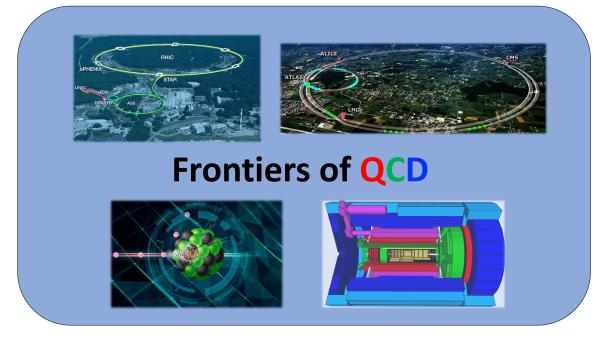Heavy Ion Physics in the EIC Era

Note to applicants: This is an in-person program.
There is a required $55 registration fee for the embedded workshop week.
Heavy ion (HI) physics is at a pivotal point. The US-based experimental program at the Relativistic Heavy Ion Collider (RHIC) is expected to end in 2025 with the construction of the next-generation nuclear physics facility - the Electron Ion Collider (EIC). In Europe, collisions of ultra-relativistic nuclei are part of the high luminosity Large Hadron Collider (HL-LHC) Run after the upcoming Long Shutdown. Thus, it is crucial to have a community-wide discussion about the accomplishments and future of heavy ion theory in the EIC era. Over nearly four decades, the field has pushed the limits of perturbative and lattice QCD, thermal field theory, small-x physics and gluon saturation, relativistic hydrodynamics and transport models, jets and heavy flavor theory. Many of these research directions have their natural extension in the studies of hadronic structure and cold nuclear matter properties at the EIC, but planning for program co-existence and transition in the future has thus far been limited. To this end, the major scientific goals of this program are:
- To provide a comprehensive theoretical interpretation of the new data from RHIC and Run 3 heavy-ion measurements at the LHC. A critical examination of initial conditions, signatures of collectivity, collision energy dependence of the quark-gluon plasma (QGP) transport parameters is needed to test the state-of-the-art theory. Identifying the problems that may have remained unresolved in the weak-coupling regime and at strong coupling close to the pseudo-critical temperature Tc is also important and timely.
- To strengthen the physics case for the heavy ion runs at the LHC. With center-of-mass (CM) energies of O(10 TeV), one possibility to study the strongly coupled regime will be provided by the LHCb experiment with the SMOG 2 detector. Operating in a “fixed target” mode at CM energy of O(100 GeV), SMOG 2 will have unique access to RHIC-like measurements. The INT event will provide theoretical guidance for the low and high CM energy heavy ion programs.
- To identify intellectual commonalities between the RHIC/LHC heavy-ion programs and the deep inelastic scattering (DIS) program at the EIC. A natural outcome of this INT event will be a roadmap of how the many-body QCD techniques, modern effective field theories, and Monte Carlo approaches developed for relativistic nuclear collisions can be adapted to electron-proton (ep) and electron-nucleus (eA) reactions to provide a robust theoretical foundation for the ep/eA runs at the EIC. Emphasis will also be placed on nucleon and nuclear structure studies and their implication for the quark-gluon plasma initial conditions and production of hard probes (jets and heavy flavor).
- To explore how applications of Machine Learning (ML) and Quantum Computing (QC) to heavy ion reactions can complement existing theory. ML techniques can provide significant advantages in extracting weak signals or hidden features from the data and in speeding up large-scale simulations. While at present full QCD problems cannot be solved on existing quantum hardware, simpler systems in lower dimensions are already accessible to quantum computing and can provide guidance for future priorities in the field.
PROGRAM FORMAT
The INT program is expected to have the structure outlined below, though the final topics for the program weeks will depend on availability of participants.
Week 1: Initial conditions and soft physics - Initial conditions for QGP dynamics; subsequent hydrodynamic evolution; collectivity in small collision systems and pre-equilibrium dynamics; vorticity; chiral magnetic effect; possibilities for quantum computing; entanglement; applications gluon saturation regime of QCD; approach to equilibrium; transport models; Monte-Carlo models; input from EIC.
Week 2: Jets and heavy flavor - Effective theories of QCD, SCET, NRQCD; EFTs in nuclear matter; higher-order and resumed calculations; commonalities between nuclear and high energy theory; jet correlations and jet substructure; open heavy flavor and quarkonia; hard probes in cold nuclear matter, jets and heavy flavor at the EIC; ML applications to extract jet features and speed up simulation; QC approaches to parton showers.
Weak 3: Nucleon/nuclear structure - Precision QCD; factorization; parton distributions functions (PDFs); fragmentation functions (FFs); long-distance matrix elements (LDMEs); TMDs, GPDs, Wigner functions; LQCD calculations; the physics of hadronization in matter; polarized reactions; the role of RHIC/LHC and EIC.
Week 4: Workshop - Overview of RHIC, LHC and EIC theory; review of key experimental results; new ideas for the future
The program will provide sufficient time for the participants to collaborate and work on open issues directly at the INT during the working weeks.
